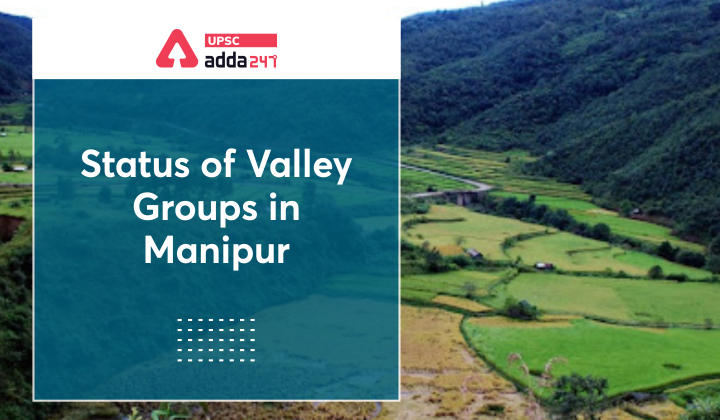”GS Paper – 3: North East Insurgency”
Why in the News?
The People’s Liberation Army and the Manipur Naga People’s Front have jointly claimed responsibility for the ambush of an Assam Rifles convoy on November 13 in Churachandpur district of Manipur, killing seven, including a Commanding officer, his wife and their five-year-old son. The ambush is one of the biggest in the state since the attack on the Dogra Rifles in 2015.
What are VBIG’s?
- Unlike the tribal groups – such as the Naga NSCN-IM and NNPGs, or the 20 odd Kuki/Zomi groups which are in peace talks with the Indian government – the Meitei valley groups have till date not come to the table to discuss a solution with the Indian Government.
- There are six main valley groups in Manipur – the UNLF, PLA, KCP, KYKL, PREPAK, MPLF – apart from numerous splinter groups from each.
- These active valley outfits are called VBIGs by security forces, which expands to valley-based insurgent groups primarily comprising the Meitei community.
- The oldest VBIG was formed in November 1964.
- The VBIGs are UNLF (Pambei), UNLF (Koirang), People’s Liberation Army, People’s Revolutionary Party of Kangleipak, PREPAK (Progressive), Kanglei Yawol Kanna Lup and Kangleipak Communist Party.
- The Pambei faction was formed in February this year after the UNLF expelled its former chairman Khundongbam Pambei.
What is the People’s Liberation Army (PLA)?
- The group was founded on September 25, 1978, under the leadership of N. Bisheshwar, after having broken away from its parent body, the United National Liberation Front.
- In 1979, the PLA’s political wing Revolutionary People’s Front (RPF) was set up.
- Like the UNLF, and many other splinter groups that would follow, the PLA was fighting for the secession of Manipur from India.
- While the PLA called for Kuki and Naga insurgents to join their ranks, it remains till this day dominated by the Imphal valley-based Meitei Hindu insurgents.
VBIGs Under Pressure
- Maintaining camps in Myanmar comes at a cost; each pays a hefty sum in US dollars to the junta.
- Informants across the border have also revealed that each of the VBIGs has been under pressure from the junta to provide at least 30 members as extra hands for the internal conflict.
- These recruits reportedly operate in Myanmar army uniform.
- Their activity over the years has dwindled, however, with recruitment having stalled on one hand, and Myanmar’s increasing cooperation with India in recent years, placing pressure on the groups.
Is this attack state-sponsored?
- In the past, ambushes and attacks on Indian security forces have taken place in the Chandel district of Manipur, which also borders the highly porous Indo-Myanmar border.
- This includes one of the biggest ambushes in the country in Chandel by insurgents which led to the killing of 18 soldiers of the Dogra Rifles and injuring 16 others.
- Since the Indian Army’s Operation All Clear in 2003-4, active insurgents have been driven out of the country into Myanmar – especially in the Churachandpur area which has remained largely peaceful, with over 20 Kuki, Paitei and Zomi groups being under Suspension of Operation agreements with the Indian government.
- The valley groups also do not operate from this district.
- Bahiang, where the attack has taken place, borders Myanmar but falls under the territorial jurisdiction of the Zomi Revolutionary Army, a powerful insurgent group in Churachandpur.
- The question that local insurgent leaders have been asking is, how the PLA could have operated in this area without ZRA permission, and have pointed to ZRA’s security lapse.
- Insurgent leaders have also pointed to the Myanmar coup as a reason for both the revival of insurgent activity as well as the choice of Churachandpur.
- The district neighbours Chin state in Myanmar where the political situation has been tenuous and there have been reports of human rights violations.
- An active People’s Defence Force, the armed wing of the National Unity Government, which claims to be Myanmar’s legitimate government, is believed to have pushed Indian insurgent groups towards the Indian border.
Unexpected Revival of PLA
- It is the seeming revival of PLA activity, that too in such a violent manner.
- The PLA has been one of the most active groups in the past but has remained dormant over the past 5-6 years.
- Leaders in other groups have pointed out that even in social programmes organised by insurgent groups – such as anti-drug campaigns, anti-AFSPA and other such protests – have been shunned by the PLA.
- So, their sudden violent activity this time has caused surprise.



 TSPSC Group 1 Question Paper 2024, Downl...
TSPSC Group 1 Question Paper 2024, Downl...
 TSPSC Group 1 Answer key 2024 Out, Downl...
TSPSC Group 1 Answer key 2024 Out, Downl...
 UPSC Prelims 2024 Question Paper, Downlo...
UPSC Prelims 2024 Question Paper, Downlo...
